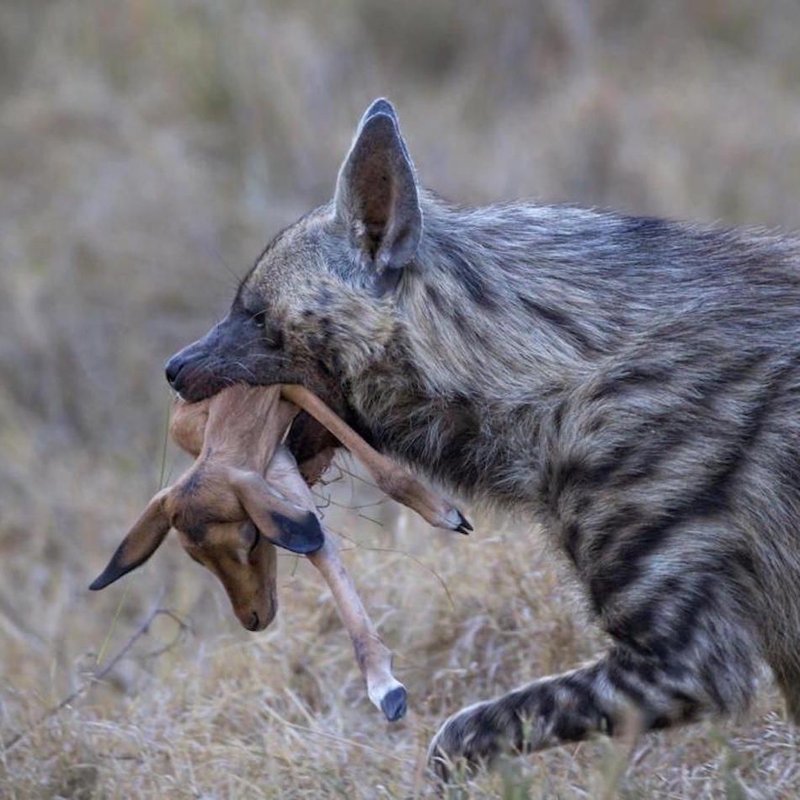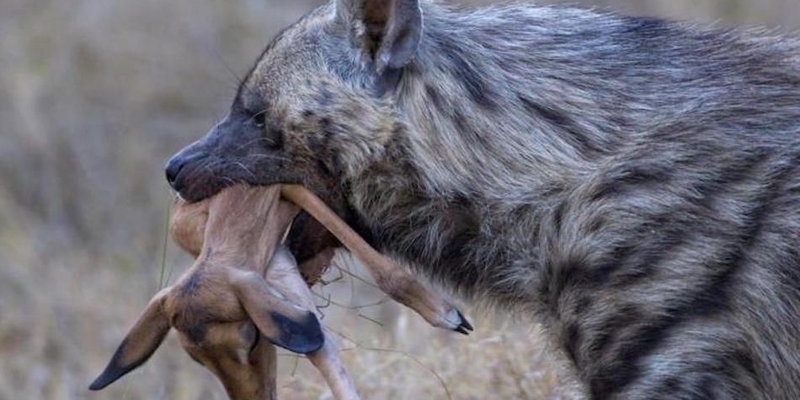
First off, it’s essential to understand that striped hyenas are more than just scavengers. They have a diet that varies significantly depending on their habitat and what’s available. Think of them as opportunistic eaters, similar to how we sometimes grab a snack based on what we have in the fridge. They have a knack for seeking out food in various environments, from dry grasslands to rocky hillsides. So, let’s explore their diet and the clever strategies they use to find their next meal.
What Do Striped Hyenas Eat?
Striped hyenas are considered omnivores, which means they eat both meat and plants. Their diet is pretty diverse, making them adaptable to different environments. Here’s a closer look at their eating habits:
- Meat: Striped hyenas often hunt small animals, including rodents, birds, and even the young of larger mammals. They’re more opportunistic than active hunters, meaning they might not chase their prey but will seize the chance when they spot an easy target.
- Scavenging: A significant part of their diet comes from scavenging. They’re known to feed on leftover carcasses from larger predators. This is where they shine; if a lion or leopard has made a kill, you can bet a striped hyena will be on the lookout for leftover scraps.
- Vegetation: They also munch on plant materials like fruits, seeds, and even roots. This adds variety to their diet and helps them survive when meat is hard to come by.
Honestly, their ability to adapt to what’s available is impressive. It’s like having an all-you-can-eat buffet where you’re not just sticking to one dish. In the wild, this flexibility helps them thrive in different conditions.
The Hunting Techniques of Striped Hyenas
Now, let’s talk about how striped hyenas go about finding their food. Their hunting techniques might not involve the high-speed chases we often see with other carnivores, but they’re clever in their approach. Here are a few strategies they use:
- Patience is Key: Striped hyenas often rely on patience. They’ll wait near a water hole or a known hunting ground, quietly observing for any opportunity to pounce on unsuspecting prey.
- Team Efforts: They can be social and sometimes hunt in small groups, particularly if the prey is larger. Working together increases their chances of success, much like a team effort in sports.
- Using Nighttime: Being nocturnal, striped hyenas are active at night. This gives them an advantage, as many of their prey are diurnal (active during the day). Under the cover of darkness, they can hunt more effectively.
Here’s the thing: while they may not have the build of a lion or a leopard, their cunning and adaptability set them apart. It’s not all about speed or strength but rather being smart and strategic.
The Importance of Scavenging for Striped Hyenas
Scavenging plays a massive role in the lives of striped hyenas. This behavior not only helps them survive but also contributes to the health of their ecosystem. Let’s break this down:
1. Cleaning Up: When striped hyenas scavenge, they help clean up the environment. By consuming carcasses, they prevent the spread of disease. It’s a bit like being a nature’s cleanup crew, ensuring that the areas they inhabit stay healthy.
2. Energy Conservation: Since scavenging requires less energy than hunting, it allows them to conserve energy. Instead of chasing down prey, they can often find food nearby without much effort. This is especially important in harsh environments where food is scarce.
3. Utilizing Resources: Striped hyenas can adapt to changing conditions, using whatever food sources are available. This flexibility is like being able to pivot and change your plans when things don’t go as expected.
Overall, scavenging is key to their survival, allowing them to thrive in various habitats with limited resources.
Social Structure and Its Impact on Hunting
Striped hyenas have a unique social structure that influences how they hunt and find food. They’re not as commonly seen in packs as spotted hyenas, but they do form small family groups. Here’s how their social behaviors impact their hunting:
- Family Bonding: Family groups tend to share food more often than solitary individuals. When one member of the group makes a kill or finds a carcass, they usually share it with others. This helps keep the family unit strong and ensures everyone gets a meal.
- Communication: Striped hyenas communicate through a variety of vocalizations, body language, and scent markings. This communication is crucial when coordinating hunts or signaling the discovery of food. It’s a bit like having a family chat to decide where to eat!
- Territory Defense: They also protect their territory from intruders. A well-defended area means they can keep their food sources secure. Think of it as their way of ensuring they have reliable access to meals.
By working together and maintaining their social bonds, striped hyenas can maximize their chances of finding food and thriving in their environment.
Adaptations for Hunting in Harsh Environments
Striped hyenas often inhabit some of the harsher environments, like deserts and scrublands. They’ve developed various adaptations to survive and hunt effectively in these challenging conditions. Here’s how they manage:
- Heat Management: With their unique physiology, striped hyenas can tolerate high temperatures. They’re mostly active at night, avoiding the scorching daytime heat. This means they can hunt when it’s cooler, increasing their chances of success.
- Efficient foraging: Their keen sense of smell helps them locate food from miles away. This skill is particularly useful in open areas where food might be sparse. Imagine having a high-tech radar for snacks!
- Camouflage: Their striped fur provides excellent camouflage in their rocky, sandy habitats. This helps them sneak up on prey without being easily spotted.
These adaptations reflect their resilience and ingenuity, allowing them to find food and survive where other animals might struggle.
The striped hyena is a master of adaptation, showcasing a blend of scavenging, clever hunting strategies, and social behavior that allows it to thrive in diverse environments. Their ability to find food, whether through active hunting or opportunistic scavenging, highlights their resilience and importance in the ecosystem.
If you ever get a chance to observe these fascinating creatures, remember the intricate web of their lives—from their feeding habits to their social structures. They embody the idea that survival is not just about strength but also about being smart and adaptable in a constantly changing world.

